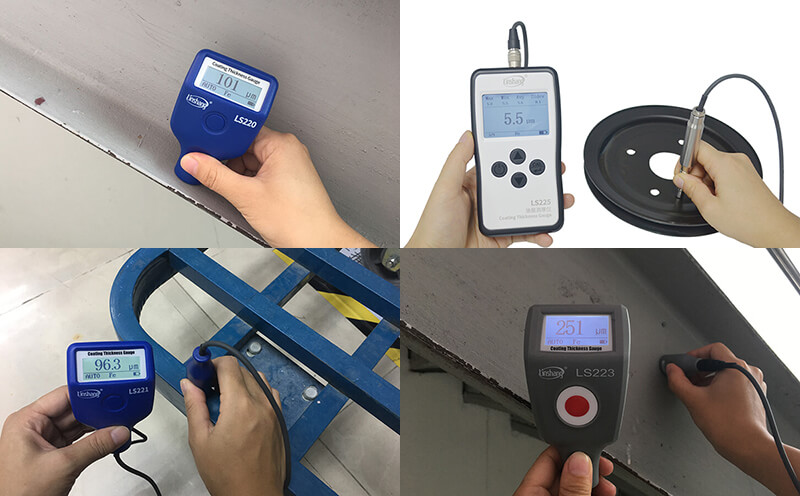Coating Thickness Measurement Methods
Coating thickness greatly affects the reliability and value of the coated product. By measuring coating thickness, in addition to assessing whether the coating thickness are within the standard coating thickness range. The coating thickness can also directly or indirectly evaluate the coating's corrosion resistance, wear resistance, porosity and other properties. Therefore, the coating thickness tester is very important in coating quality inspection and process research. It is an professional coating thickness measurement tool used to test the coating thickness using non-destructive method.
1. Coating thickness measurement methods
The inspection of coating thickness is generally divided into two methods: average coating thickness and local thickness. Since the local thickness is more economic than the average thickness in practical applications. In most cases, the local thickness and local average coating thickness are measured. When measuring coating thickness, we should at least test the coating thickness of three points and calculate the average value as the result.
There are two types of coating thickness measurement methods: destructive coating thickness measurement method and non-destructive coating thickness measurment method. Destructive coating thickness measurement methods: The drop method, time flow method, dissolution method, coulomb method, metallographic microscope method, drip method,etc.
2. Non-destructive coating thickness measurement methods
Non-destructive coating thickness measurement methods: Magnetic method, eddy current method and X-ray fluorescence measurement.
Linshang coating thickness tester use the non-destructive method of both magnetic and eddy current measuring principles. The destructive thickness measurement method is generally applicable to non-precious coatings or products processed in large quantities, while the non-destructive thickness measurement method is applicable to some valuable or precision coating products. Magnetic and eddy current measuring methods are two most commonly used non-destructive coating thickness measurement methods.
3. Destructive coating thickness measurement methods
(1) Timed flow method
Principle: The time-flow method is a chemical method. It uses a certain test solution at a certain flow rate to form a stream. The surface of the coating under test is partially dissolved. The coating is dissolved under the action of the solution and can be visually observed. In the case of the coating, until the coating is completely dissolved, the end metal color appears as the end point. The coating thickness is calculated according to the time it takes for the part to be dissolved.
(2) Dissolution method
Principle: The coating on the test sample is dissolved by using a solution that does not cause damage to the base metal. The coating solution can be chemical or electrochemical. Coating thickness is calculated based on its weight loss and the surface area of the coating portion. In general, the weight loss of a coating can be determined by chemical analysis or weighing.
(3) Coulomb method
Principle: On a known area of the tested coating surface, the coating is used as the anode to dissolve the coating at a constant current density in the corresponding test solution. When the coating metal is dissolved and the exposed base metal or intermediate coating is exposed, A sudden change in the cell voltage indicates that the end point has been reached. The local thickness of the coating was calculated according to Coulomb's law, the area of the coating dissolved by the current consumed by the coating metal.
(4) Metallographic microscope
Principle: Metallographic microscope thickness measurement is a method that uses a special metallographic microscope with a certain magnification and a micrometer eyepiece to observe and measure the thickness of the coating cross section.
(5) Drip method
The spot method is the simplest method for coating thickness measurement. It has the advantages of simple instrument and method. However, the disadvantage is that the accuracy is low and the accuracy is generally ± 20%. Colleagues' method is not suitable for parts with small shapes and small parts, so it is only used as a reference for rough determination. The principle is a solution with a certain composition. The solution is dropped on the measured coating surface through a dropper with a tip of 1.5-2.0mm diameter. The coating is dissolved for a certain period of time until the coating is dissolved to expose the substrate and the underlying metal coating.
- High precision coating thickness gauge for used car
- Automotive paint protection films coating thickness gauge
- Plating Thickness Measuring Instrument for Detecting Anti-corrosion Coating
- Linshang LS220, LS191, LS160A– Necessary for Car Cover Inspection
- Coating Thickness Gauge for Second Hand Vehicle
- Zero Adjustment Step of Coating Thickness Gauge
